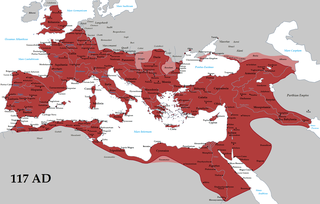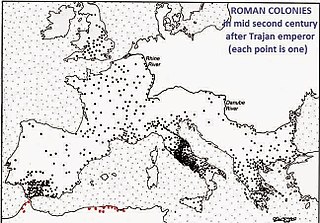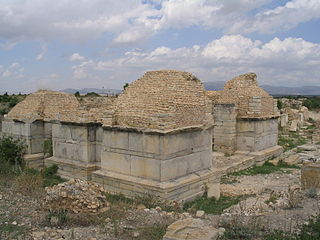
Segermes is an ancient town in Tunisia. Under the Roman Empire, the city belonged to the province of Byzacena. The town is identified with ruins at Henchir Harat, Zaghouan( 36° 20′ 43″ N, 10° 18′ 03″ E).
Sidi El Hani is a town and commune in the Sousse Governorate, Tunisia located at 35.67n, 10.30e. As of 2004 it had a population of 3,058. It gives its name to the largest lake of the governorate, a natural salt lake or salt pan (sabkha) in dry seasons, the Sebkhet de Sidi El Hani which is shared with between one and two other areas depending on precipitation and its maximum extent forms the official boundary with part of a third, Monastir Governorate. The town is 30km south-west of the coast, its straightest connection being by Tunisian Railways, with a secondary connection by road, the P12 road which is a principal road to Kairouan from the A1 a few kilometres to the east. it is 19km from Kairouan and 26 km from Raqqada and.
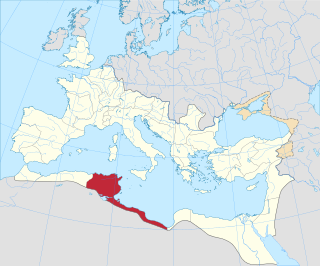
Vazari-Didda or Vazari Didda) was an Ancient city and bishopric in Roman Africa, which remains a Latin Catholic titular see.
Villamagna in Proconsulari was a town in the Roman province of Africa Proconsulare. It is identified with the modern village of Henchir Mettich located around 50 km from Carthage in Tunisia.

Volitanus also known as Voli and Bolitana was a Roman era civitas (town) of Africa Proconsularis, a suffragan metropolis of Carthage in Roman North Africa.

Altiburus was a Roman–Berber town located in Africa Proconsularis. The town is tentatively identified with ruins at Henchir-Medeina in modern Tunisia.
Avioccala was a Roman and Byzantine era town in the Roman province of Africa Proconsularis in northern Tunisia. The town lasted from 30BC to about 640AD, and has been tentatively identified with the stone ruins at Sidi-Amara, Tunisia.

Villamagna of Tripolitania was a Roman era settlement in what was the Roman province of Tripolitania. The town is identifiable with ruins at Henchir-Sidi-Abdein in today's Libya.

Lamzella was a civitas (town) in the Roman–Berber province of Numidia. It has been tentatively identified with the ruins at Henchir-Resdis in modern Algeria.

Aeliae or Æliæ was a Roman-era city in the province of Byzacena.

Thagamuta was a Roman–Berber city in the province of Byzacena. The location of the town is not definitively known, but it was on the plain of Guemouda in modern Tunisia.
Drusiliana was a civitas (town) of Roman North Africa. Bingham called it a city of the Roman province of Mauretania Caesariensis. An inscription of Constantine the Great was found in the city ruins and it appears on the Tabula Peutingeriana The town has been tentatively identified with ruins near Khanguet-el-Kdim in northern Algeria. . Located at 36.249547N, 8.907667E. Epigraphical evidence suggest Constantine the Great undertook some works in the city in 312AD.
Cincari was a Roman era civitas of Africa Proconsularae a town which has been tentatively identified with the ruins of Henchir Tengar in today's northern Tunisia. The ruins at Bordj Toum have also been proposed as an alternative for the town.

Simidicca, was a Roman era civitas of the Roman province of ' Africa Proconsolare.

Utimma was an ancient city in the Roman province of Africa Proconsularis during the Byzantine and Roman Empires. the exact location of Utimma is lost to history but it is believed to be between Sidi Medien and Henchir-Reoucha in Tunisia.
Henchir-El-Meden is a locality and archaeological site in Tunisia.
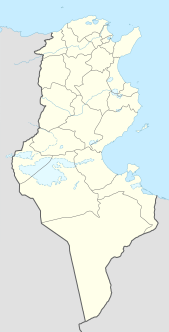
Henchir-Khachoum is a locality and series of archaeological sites in Sidi Bouzid Governorate modern Tunisia. The ruins are strewn along a tributary of the Oued El Hatech river east of Sbeitla. During the Roman Empire there was a Roman town of the Roman province of Africa Proconsularis, called Muzuca, one of two North African towns to bare that name.
Henchir-Baldia is an archaeological site and locality in southern Tunisia. The stone ruins are tentatively associated with Bladia, a civitas of the Roman province of Byzacena during the Roman Empire. It was a Catholic bishopric.

The Diocese of Dices, is a titular see of the Roman Catholic Church. The location of the seat of the diocese is unknown for certain, but is perhaps identifiable with Henchir-Sidi-Salah, Tunisia. Henchir Sidi Salah was an ancient diocese in the Roman-Berber province of Byzacena.
The Diocese of Thucca Terenbenthina is an ancient Titular See of the Roman Catholic Church. The diocese is also known as Tucca Terebentina or دڨة, .


